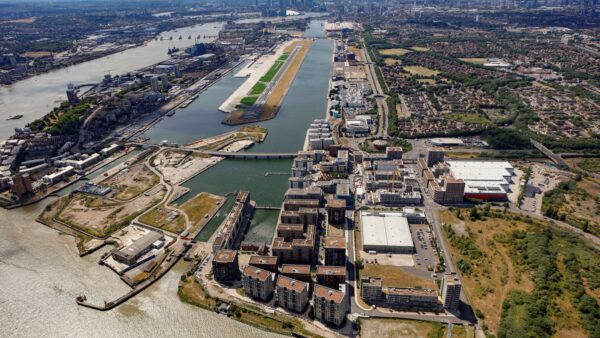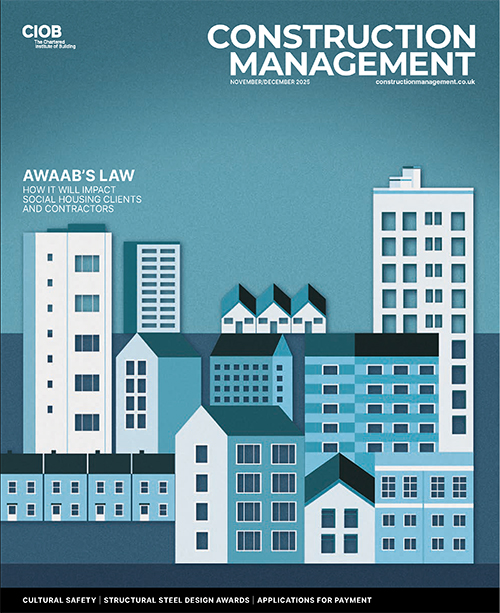
Free schools could be a profitable revenue source. Elaine Knutt and Jan-Carlos Kucharek find out what you need to get a project off the ground.
There’s a bi-lingual secondary in Oxford, a Steiner school in Somerset, a primary school offering 8am to 6pm school days to suit the working parents of Cobham, and an academy in Warrington educating the “business leaders and scientists” of tomorrow. Among the dozens of free schools opening this September — the second annual wave of state-funded schools that sit outside local authority control — there’s certainly an educational flavour for everyone.
But has the free school programme brought diversity and innovation to the schools estate? Launching the initiative in 2010 education secretary Michael Gove promised — or threatened — converted pubs, re-purposed office blocks and an opportunity for “free” thinking for designers and contractors.
The reality seems to be matching the rhetoric. In Bradford, a free school is opening in part of Bradford City Football Club’s Valley Parade grounds, while elsewhere in the city BAM is converting a former retail shed as part of the Kings Science Academy. In Derby, Mace is converting a 1960s office block into the Al-Madinah Muslim faith school, while Carillion is converting the former Bolingbroke Hospital in west London into an Ark academy.
Tight programmes are typical across all education projects, but how about a breakneck contract pace of a 10-week programme with only six spent on site, achieved with 24-hour working and hour-by-hour programming? That’s been achieved by Willmott Dixon at Oakbank Secondary in Wokingham, Berkshire, one of nine free schools the contractor is building.
And we’ve seen the first example of what the New Schools Network, the government grant-funded body set up to support free school applicants, predicts could become a wider trend — a housebuilder-promoted free school to serve a new community, from Urban Splash in New Islington, east Manchester.
In general, there’s evidence of a willingness to rethink what a school might actually look like — although detractors might link this to the DfE’s decision to suspend the BB98 Accommodation Schedule for free schools. “We’ve been thinking hard about what the schools really want and it’s forcing all of us to think differently. You don’t get grand entrances and foyers — there’s an emphasis on simple teaching spaces,” says Janie Chesterton, education director at Willmott Dixon. “The standard classroom size is 56 square metres, but some head teachers are saying, no, we’ll take 50 square metres and trade it off against something else.”
And contractors are being challenged to take on unpromising sites. “The fact that we’re building [Woodpecker Hall in Enfield] is great — the community gets a new school, on a site that might not have been considered possible and the local authority wouldn’t have considered,” says Richard Topliss, contracts manager at Leadbitter.
Leadbitter, Willmott Dixon and 13 others make up the Education Funding Agency’s Contractor Framework, which has delivered most of the free schools completed so far. Capital budgets are set according to the needs of the site, but at an average of £1,800 per m2, budgets are in line with the latest wave of new academies and the Priority Schools Building programme.
Click here to read our free school case studies

The process starts with faith groups, parent-led promoters and not-for-profit educational groups applying to the Department for Education for funding. Once green-lighted, applicants receive a grant to develop their educational strategy, hire staff and market themselves to parents — EC Harris and Mott McDonald are two of 12 firms on the EFA framework for this project management role. In addition, groups can use part of their grant to pay for construction management advice. But on the actual construction, the EFA acts as overall client, negotiating on sites, appointing the contractor and running the projects.
In practice, free schools rely heavily on the expertise of the framework contractors, who appoint their own consultant teams and often devise phasing strategies to allow schools to open partially for the first year’s intake while work progresses elsewhere.
Leadbitter is delivering a free school primary and two academies, and says the free school involves a higher level of autonomy and closer contractor-client involvement. “The way the job comes together, the budget and the design responsibility is ours, and we work much more as a team with the client and end user. So you feel more inclined to be open and sort out the problems — that’s the environment it creates,” says Topliss.
Mainstream move
Free schools may have started on the fringe, but they’re rapidly moving into the mainstream. In July, another 102 were approved for funding, and the New Schools Network predicts that approvals will run at a similar level in the coming years. As Marcus Fagent, partner and head of the schools team at EC Harris, points out, population growth is as much the driver as educational policy. “The biggest political issue will be the shortage of school spaces — towards the election, the government will want to be seen to be adding places.”
They’re also a significant part of the DfE’s Capital Spending Programme. EC Harris calculates a rough average of £4m-£5m each, or £400m-£500m a year. That’s on a similar level to the Priority School Building programme, and compares to the £150m-£200m predicted annual spend on University Technical Colleges.
However, EC Harris also points out that Basic Need funding for new build and maintenance — where projects are tendered directly by local authorities — is still worth £2bn a year.
But for the next wave of free schools, the DfE has confirmed that projects will be tendered outside the framework, although it hasn’t yet announced details. It’s likely that there will be batching of contracts, either with other free schools or possibly even with non-educational public sector projects in a given area.
But before free school novices rush in, there’s a health warning from Darren Talbot, head of education at consultant AECOM Davis Langdon, whose team works with contractors on bids and cost management. He points out that free schools — often low-value complex refurbishments — offer little budgetary room for “abnormals” and surprises, and more scope for slip-ups and over-runs.
“Some contractors will struggle to make them stack up financially, or get them through their internal governance procedures. Sub £5m, contractors have to look at them very carefully,” he says. At EC Harris, partner and education account leader Louise Allanach agrees. “For designers and contractors these refurbs are more risky, with new-build you can accept risk at low funding levels, but with refurb it’s more of an unknown.”
As an example of what can go wrong, Talbot cites the case of the Ark Conway primary in Hammersmith and Fulham, where the first site was abandoned, the next plan to convert a Grade II listed library was complicated by finding underground services beneath the planned new build, and the school opened last September in temporary buildings.
Suitable sites
Many free schools in urban areas have struggled to find suitable sites, forcing project teams to come up with innovative temporary or phased solutions. According to Allanach, the DfE has now improved the application process to reflect this — accelerating the education assessment so that the promoters have more time to devote to finding the right site. But EC Harris floats an interesting proposition. “The model has been that
the site would be acquired by the local authority or the government, then grantfunded. But we think the schools could lease it from developers who could fit it out on a 20-year lease — it would be good value for the public purse. There’s a large volume of unlet commercial space, much of it in urban areas where there’s a need for school places.” EC Harris is currently discussing the idea with the EFA.
But whatever the solution, free schools are here to stay and present a significant workstream, albeit one ringed with challenges. “We’re already seeing a lot of technically challenging and interesting conversions, I think we’ll see a wider and wider range of buildings used,” comments Allanach at EC Harris, who also predicts the wider option of standardised system building in the sector.










